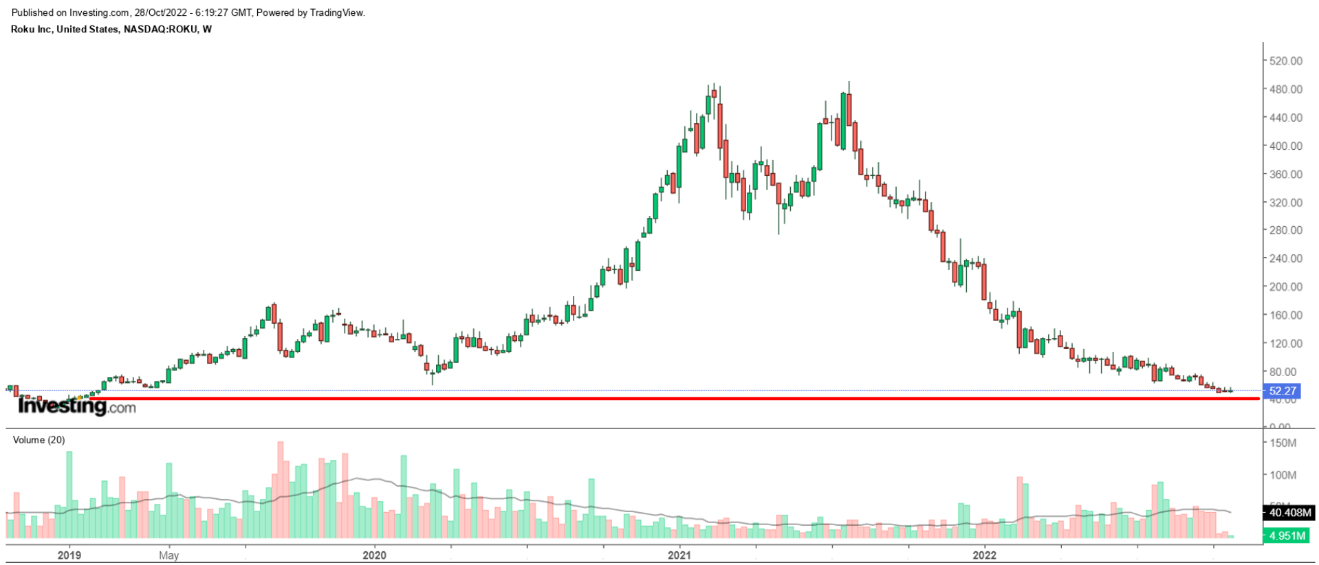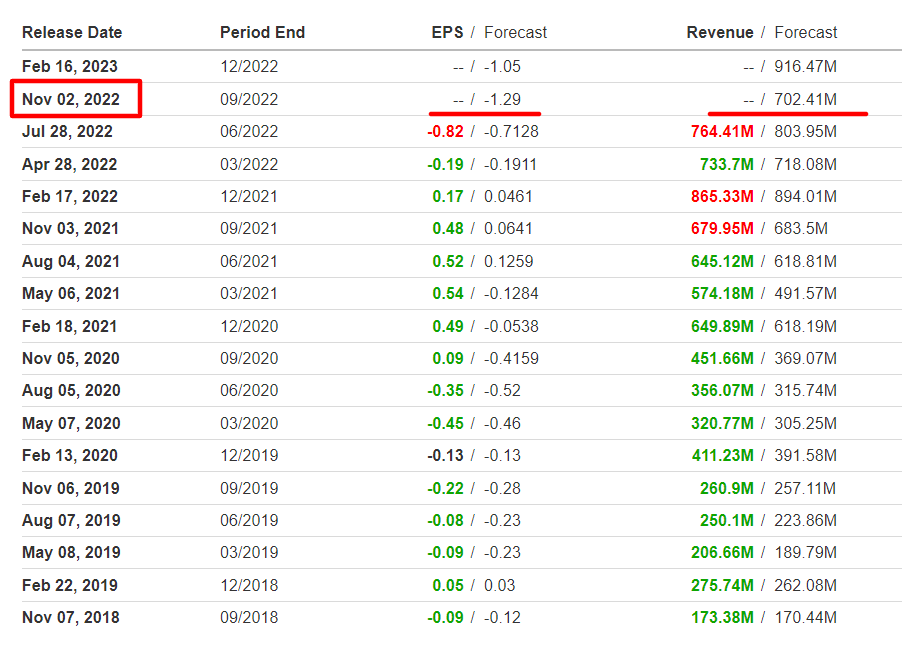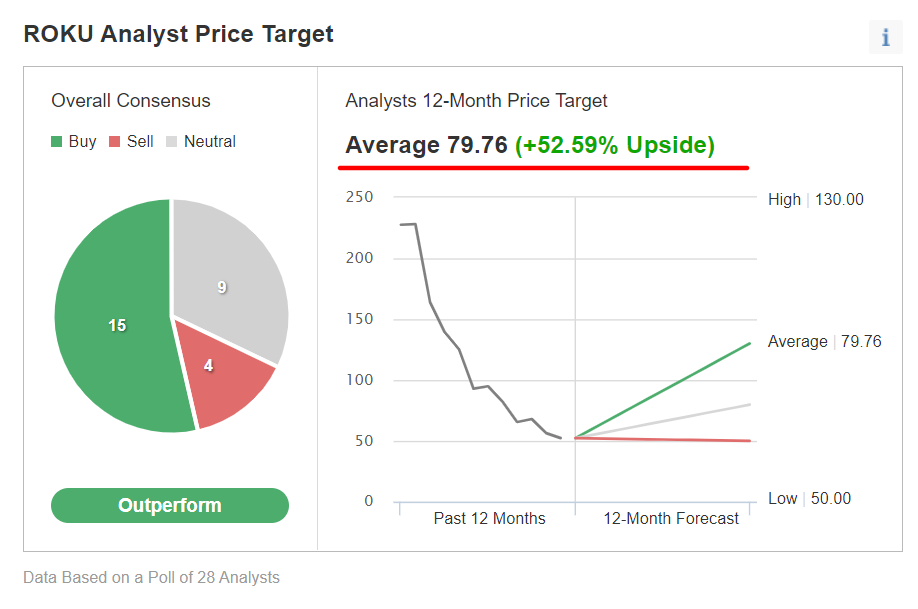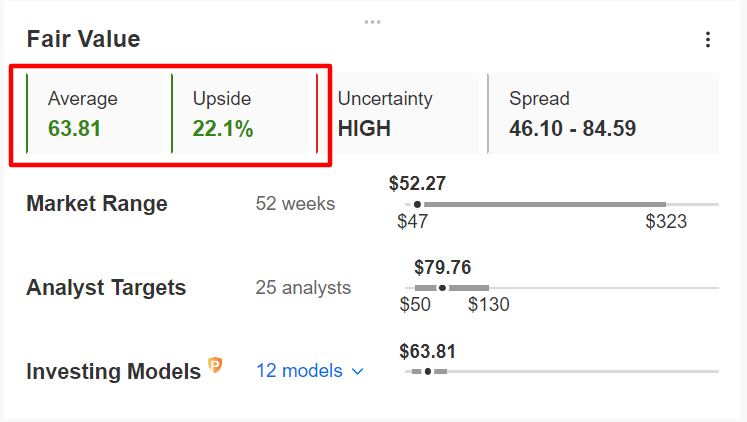- Roku has struggled in the face of worsening macroeconomic headwinds
- Stock is down 77.1% year-to-date and 89.3% below its July 2021 record high
- Shares are attractive after their big decline this year.
It’s been a difficult year for Roku (NASDAQ:ROKU), whose stock has lost more than two-thirds of its value amid worsening macroeconomic headwinds, such as rising interest rates, soaring inflation, and worries about a possible recession.
The ad-reliant streaming platform and hardware provider, which was one of the notable pandemic winners, has also struggled in the face of deteriorating fundamentals, including slowing digital-advertising spending, supply chain constraints, as well as increased competition from other streaming companies.

After rallying to a record high of $490.76 in July 2021, ROKU stock, which is down 77.1% year-to-date (ytd), tumbled rapidly to a low of $47.27 on Oct. 24. Roku shares have since staged a modest rebound, closing at $52.27 on Thursday, but they still stand roughly 90% below their all-time peak.
At current levels, the San Jose, California-based streaming device maker has a market cap of $7.2 billion compared to $60 billion at its peak.
Roku shares have become extremely attractive after their slide this year, given its impressive active account growth and improving monetization of existing and new users.
The next major catalyst is expected to arrive when Roku reports Q3 results after the U.S. market closes on Wednesday, Nov. 2.
Consensus expectations call for a loss of $1.29 per share on revenue of $702.4 million compared to a profit of $0.48 per share and sales of $679.9 in the year-ago period.

When the company reported earnings in July, it warned that the advertising market will continue to face headwinds and that consumer discretionary spend will continue to moderate, pressuring both Roku TV and Roku player sales. The streaming video pioneer also said it slashed operating expenses and slowed hiring in the second quarter.
Given the uncertainties and volatility in the macro environment, the company withdrew its full-year guidance for sales growth.
Despite the challenging backdrop, Roku still managed to add 1.8 million active users in Q2 to reach 63.1 million, up 14% year-over-year (yoy). Streaming hours jumped 19% yoy, while average revenue per user (ARPU) grew 21% to $44.10.
That leads me to believe that Roku’s headwinds are primarily macro-driven and do not reflect execution issues at the video streaming company. Additionally, I expect the launch of new low-priced ad-supported tier models on Netflix (NASDAQ:NFLX) and Disney (NYSE:DIS) could serve as near-term tailwinds to help revive growth.
Bottom Line
Roku’s business is far from broken. I remain positive on Roku and believe the streaming firm is still one of the best-positioned companies to benefit from the secular shift to connected TV amid the ongoing cord-cutting trend.
Wall Street has a long-term bullish view on Roku, as per an Investing.com survey, which revealed that 24 out of 28 analysts covering the stock rated it as either a ‘buy’ or ‘hold’.

Similarly, the average fair value for ROKU stock on InvestingPro+, according to a number of valuation models, implies 22.1% upside.

As such, any hints of recovery in the digital advertising industry, combined with improving macroeconomic conditions, will likely see ROKU shares break out of their recent downtrend.
Disclosure: At the time of writing, Jesse is long on the S&P 500 via the SPDR S&P ETF. He is also long on the Energy Select Sector SPDR ETF and the Health Care Select Sector SPDR ETF. The views discussed in this article are solely the opinion of the author and should not be taken as investment advice.
